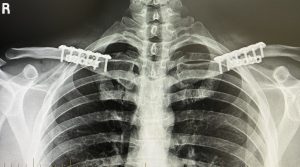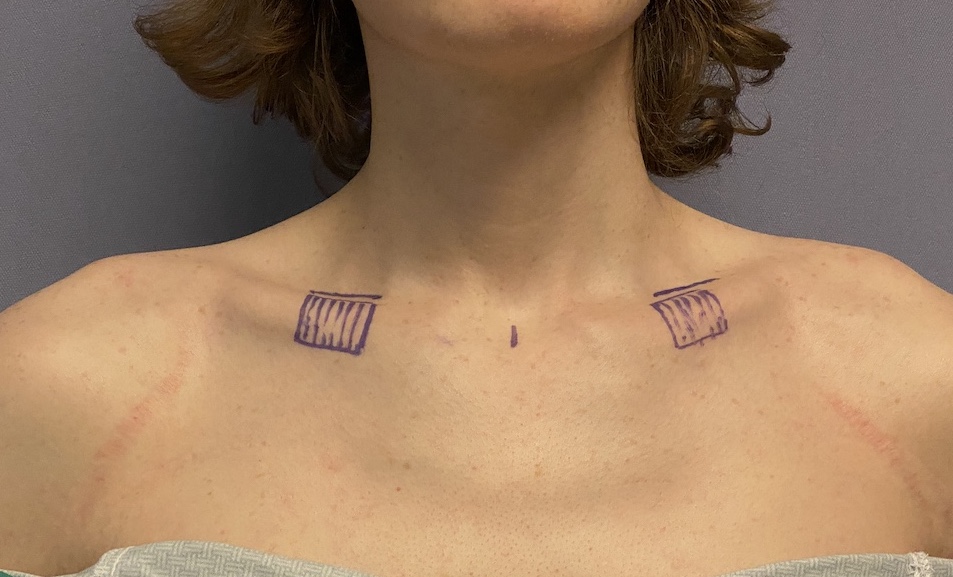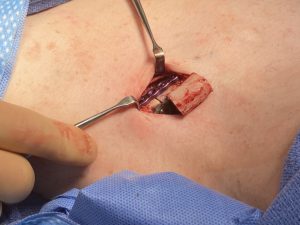Background: One of the primary patient questions and concerns in shoulder narrowing surgery is how bone is going to be removed. As a general guideline I base how much bone is removed based on patient height. Shorter patients get 2.5cms removed per side, medium height patients get 2.75cms and tall patients get 3cms removed per side. The other relevant question about bone removal is whether the same amount of removed per side…which is going to be based on whether clavicle/shoulder asymmetry exists.
Studies have shown that clavicle symmetry exists in about 75% of the population. (as determined by 5mm or less difference in length) The remaining 25% had length differences of 5mm or more of which asymmetries of 10mms or more was found in around 10%. (as defined by significant asymmetry) Thus it plays to check clavicle lengths before the surgery to determine if the amount of bone removal should be different between the two sides.



To the best we know today based on clinical experience a 3cm reduction in clavicle length has no adverse arm fringe of motion side effects. Whether more is safe to take is not yet known. Using that as the bone removal goal in tall patients, when significant clavicle length asymmetry exists less should be taken off the shorter side to keep the 3cm limit from being reached.

Case Highlights:
1) Significant clavicle asymmetry exists in 10% of the population so it should be checked before surgery.
2) In significant clavicle asymmetry that should be accounted for in the bone removal plan.
3) In tall patients this means less should be taken off the shorter side rather than more taken off the longer side for asymmetry correction. This keeps it in the 3cm range rather than exceeding it.
Dr. Barry Eppley
Indianapolis, Indiana






